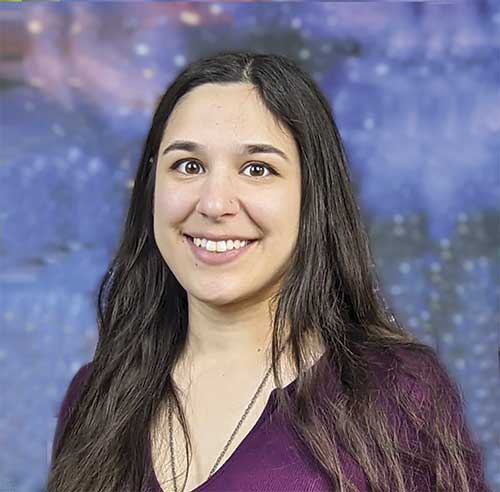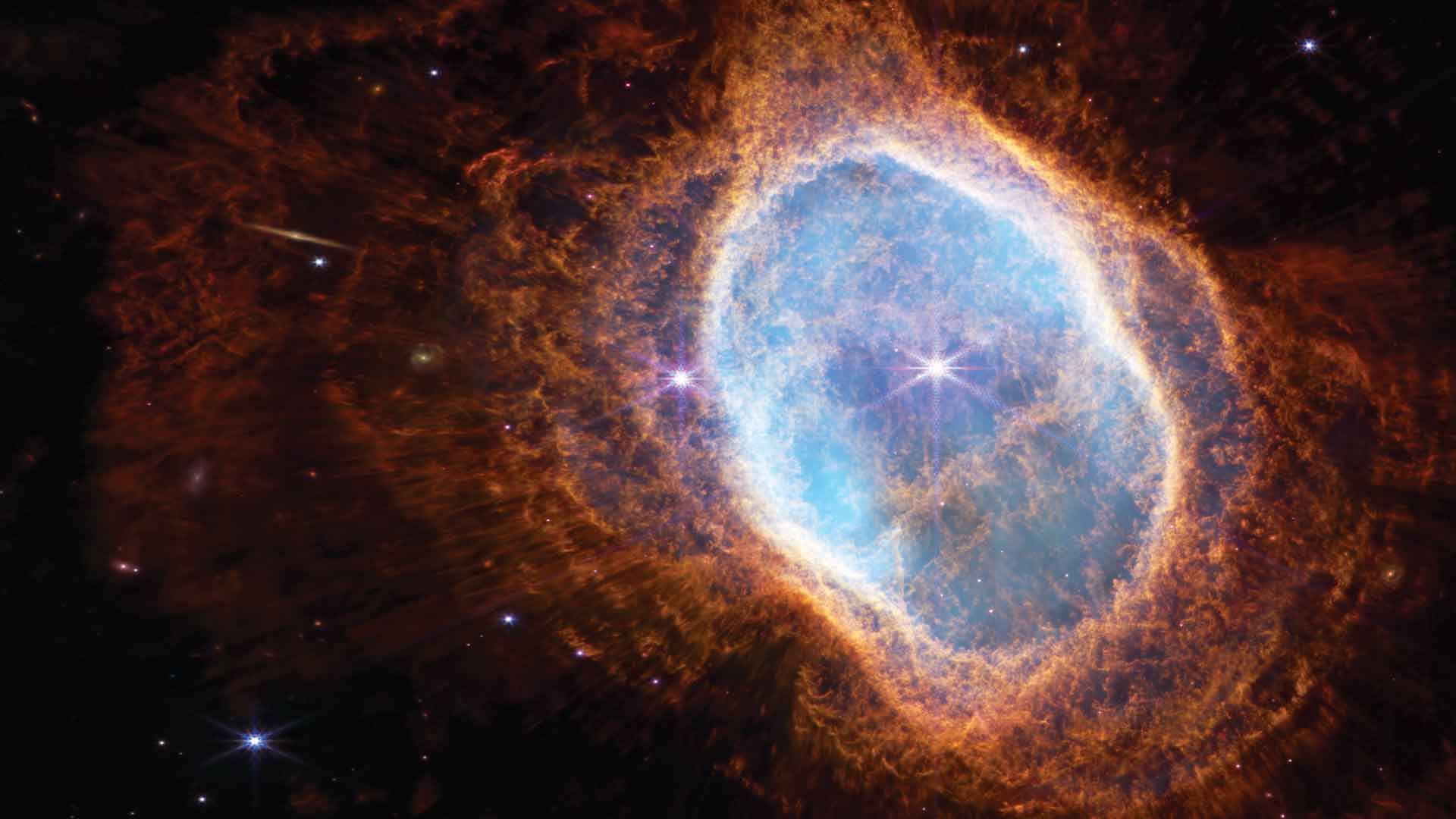Last July 12, people around the world witnessed a first-ever in science: the release of initial images from the James Webb Space Telescope (JWST). A veritable smorgasbord of stunning cosmic visuals, the data from the telescope will enable scientists to learn and see more about the universe than ever before. Following are some of the early images as well as comments from members of the Johns Hopkins community.
Early Images from the James Webb Telescope
How JHU Sees the James Webb Images
A worthwhile endeavor

Outside the Space Telescope Science Institute on July 12, Senator Barbara Mikulski, Homewood Professor in the Department of Political Science, gave a toast with a crowd of scientists holding champagne flutes. “This is a 30-year, $30 billion overnight success,” she joked. “But it’s also a job worth doing and a job well done. I’m so proud of you, and your country is proud of you.” Mikulski, who served as U.S. senator from Maryland from 1987 to 2017, has always been a powerful champion for NASA and an influential figure in space policy. Believing that a strong U.S. space exploration effort was imperative, she advocated staunchly for the Space Telescope Science Institute (STScI) and Goddard Space Flight Center, and for full funding for missions including the Hubble and Webb telescopes.
Only the beginning

There were times when we weren’t sure if things would work, but they’re working spectacularly. It’s just amazing. It’s blowing my mind. We get these amazingly detailed images of distant galaxies and all these tiny little clumps and star clusters that just pop out that we could never see before. And so, we’re really seeing for the first time what galaxies looked like in the early universe. Every observation that Webb makes for the first year has the potential to transform our understanding of the universe. For many years to come, we’re going to be doing so many exciting things. We’re going to answer so many questions, and then, of course, we’re going to have more questions that we never dreamed of.”
—Dan Coe, A&S ’04 (MA), ’07 (PhD),
Astronomer, instrument scientist,
Space Telescope Science Institute/JWST

A remarkable achievement
Just the fact that this mission was decades in preparation and having a textbook-perfect launch. Just being involved in seeing all these different subsystems that need to work together—having 18 different individual mirror segments working as one—for all the instruments getting initial data and starting to process it and getting things working to the point where we could take these amazing images. It was a lot of work, people giving it their all for months on end. From a scientific perspective, there is something about humanity that just really wants to know about where we are and where we came from. And what we’re going to learn from JWST is definitely going to feed into that and give us probably more questions—it always does—but also give us some answers that I think will only increase our awe and appreciation of the universe.”
—Stephanie LaMassa, A&S ’08 (MA), ’11 (PhD),
Scientist, branch manager,
Space Telescope Science Institute/JWST

Reality check
I just kept looking at it and thinking, like, ‘Is this real? How could this be real?’ And, really, at some level, I think the thing that struck me the most was, I grew up, like many of us, thinking of the sky as a place that was dark at night with a few exceptions of stars and little blobs of light. And when you can see this deeply, and with this kind of resolution, actually you start to see most of the image is actually light. The darkness starts to become the rarity, if you know what I mean. And so it’s almost like a completely different conception of the universe as a place that’s mostly filled with activity, mostly filled with luminous things, mostly not empty.”
—Adam Riess,
Bloomberg Distinguished Professor,
Thomas J. Barber Professor of Physics and Astronomy,
Nobel Laureate
More Than Meets The Eye

Those Webb images that we’ve come to accept as definitive depictions of space didn’t get here by scientists simply snapping a camera shutter. Instead, they’re the result of meticulous work by the Space Telescope Science Institute’s science visuals developers Joseph DePasquale and Alyssa Pagan.
DePasquale and Pagan were on the STScI team that decided what Webb’s early targets would be, so they had some idea of what they would observe that first day. But the moment the first image began to emerge from their black screens was no less stunning.
“As I was uncovering the beauty of these images, I reflected on all it took to get here, and felt so proud of humanity for designing such scientific marvel that seemed impossible to achieve, but forever would change our understanding of the universe,” says Pagan. “Being one of the first people to explore these images was so mind-blowing, and I feel a great responsibility to present the data in a way that showcases the beauty of our universe while also being true to the science in a way that is most accessible and as clear as possible.”

The team is sometimes asked whether the images are “real.” The answer is a resounding yes, they say. If we could fly into space and stand beside a nebula or exoplanet, what we would see would not be identical to the images. But that’s not because they’re not there; it’s because our eyes can’t perceive them. What the team does is translate the physics of the objects into light visible to us.
“It’s all real stuff out there, and it’s just that we’ve built instruments that are really sensitive to it, to be able to see something that our eyes are not sensitive to,” says DePasquale, senior science visuals developer.
Making the Data Visible
The process of transforming data into images perceptible to the human eye is extraordinarily complex, requiring both art and science. Here, DePasquale and Pagan share some of the highlights.
Learn More
- In-depth video presentations on processing Webb images by Alyssa Pagan and Joe DePasquale.
- STSci/JWST website: https://webbtelescope.org/
















